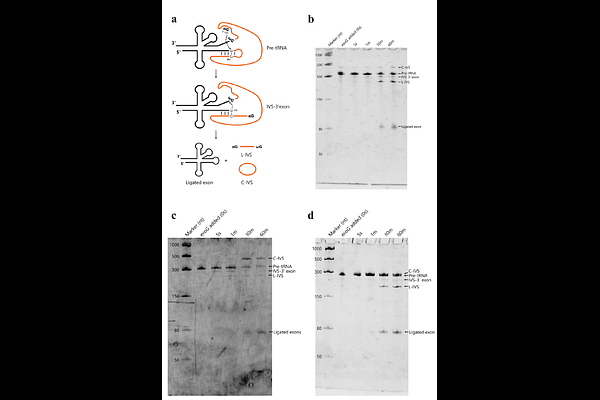A Novel Insertion Site for Group I Introns in tRNA Genes of Patescibacteria

A Novel Insertion Site for Group I Introns in tRNA Genes of Patescibacteria
Nakagawa, Y.; Amikura, K.; Omae, K.; Suzuki, S.
AbstractPatescibacteria is a bacterial phylum with small genomes, frequent loss of essential genes, and the presence of introns. While many aspects of Patescibacteria remain enigmatic, an intriguing feature is the widespread occurrence of introns within their compact genomes. To better understand the diversity, roles, and evolution of bacterial introns, we focused on tRNA introns and analyzed Patescibacteria complete genome. Notably, 20% of these genomes lacked at least one tRNA gene for a canonical amino acid, primarily tRNAAsn and tRNAAsp, whereas other tRNA genes were readily detected. This observation led us to conduct further analyses, resulting in the discovery of a novel group I intron insertion site at position 35/36 within the anticodon loop that likely prevented detection by conventional annotation tools. Splicing assays demonstrated that these bacterial introns are catalytically active and capable of self-splicing. To assess the broader distribution of this insertion site across bacteria, we analyzed 4,934 bacterial genomes and identified 269 group I introns within tRNA genes across 14 phyla. Nearly 70% of introns at position 35/36 originate from Patescibacteria, indicating that this feature is largely confined to the phylum. Subgroup classification showed that 79% of all tRNA introns belonged to the IC subgroup, whereas almost all Patescibacteria introns were assigned to IA, suggesting a distinct evolutionary origin. As most tRNA introns lacked homing endonuclease genes, horizontal transfer appears limited. Collectively, these findings advance our understanding of the phylogenetic distribution and evolutionary history of bacterial group I introns in tRNAs, with particular emphasis on Patescibacteria. IMPORTANCE Group I introns in bacterial tRNA genes were previously known only in a limited number of phyla. Our study expands this knowledge by identifying a novel insertion position in tRNA genes of phylum Patescibacteria and mapping their phylogenetic distribution across bacterial lineages. Our result revealed that group I introns inserted in tRNA genes differed in subgroups between Patescibacteria and other bacteria, highlighting the evolutionary uniqueness of introns of Patescibacteria. Additionally, we found that group I introns are maintained in 43% of bacterial phyla, with tRNA insertions being the most common. Our findings highlight that even in complete genomes, the presence of group I introns can hinder the detection of all 20 canonical tRNA genes by conventional tRNA annotation tools. This study illustrates the overlooked phylogenetic distribution of group I introns across the bacterial domain.